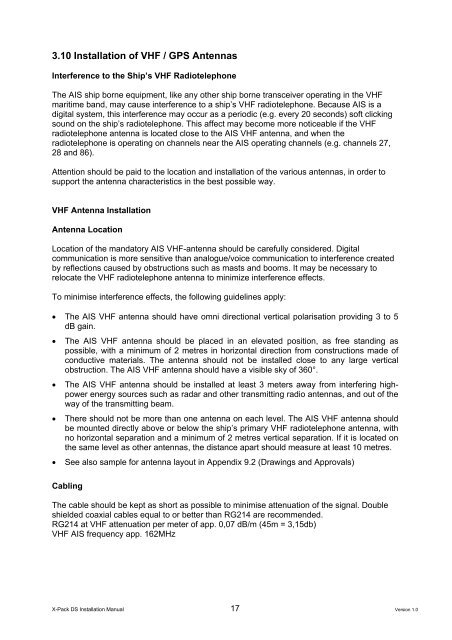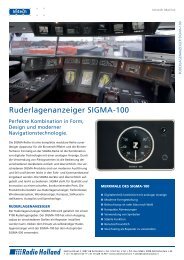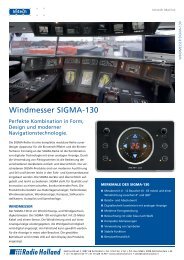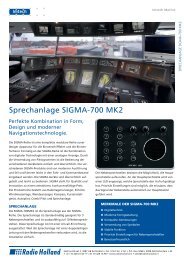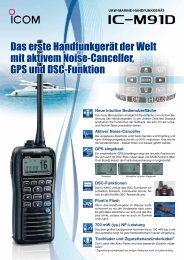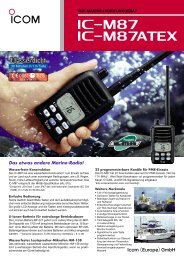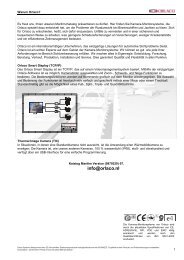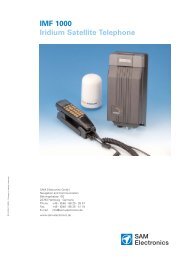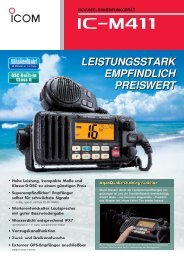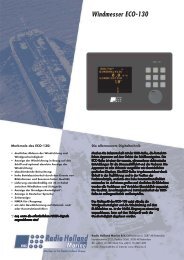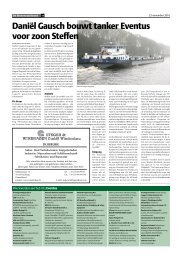Installation Manual Nauticast V1.0.3
Installation Manual Nauticast V1.0.3
Installation Manual Nauticast V1.0.3
You also want an ePaper? Increase the reach of your titles
YUMPU automatically turns print PDFs into web optimized ePapers that Google loves.
3.10 <strong>Installation</strong> of VHF / GPS Antennas<br />
Interference to the Ship’s VHF Radiotelephone<br />
The AIS ship borne equipment, like any other ship borne transceiver operating in the VHF<br />
maritime band, may cause interference to a ship’s VHF radiotelephone. Because AIS is a<br />
digital system, this interference may occur as a periodic (e.g. every 20 seconds) soft clicking<br />
sound on the ship’s radiotelephone. This affect may become more noticeable if the VHF<br />
radiotelephone antenna is located close to the AIS VHF antenna, and when the<br />
radiotelephone is operating on channels near the AIS operating channels (e.g. channels 27,<br />
28 and 86).<br />
Attention should be paid to the location and installation of the various antennas, in order to<br />
support the antenna characteristics in the best possible way.<br />
VHF Antenna <strong>Installation</strong><br />
Antenna Location<br />
Location of the mandatory AIS VHF-antenna should be carefully considered. Digital<br />
communication is more sensitive than analogue/voice communication to interference created<br />
by reflections caused by obstructions such as masts and booms. It may be necessary to<br />
relocate the VHF radiotelephone antenna to minimize interference effects.<br />
To minimise interference effects, the following guidelines apply:<br />
• The AIS VHF antenna should have omni directional vertical polarisation providing 3 to 5<br />
dB gain.<br />
• The AIS VHF antenna should be placed in an elevated position, as free standing as<br />
possible, with a minimum of 2 metres in horizontal direction from constructions made of<br />
conductive materials. The antenna should not be installed close to any large vertical<br />
obstruction. The AIS VHF antenna should have a visible sky of 360°.<br />
• The AIS VHF antenna should be installed at least 3 meters away from interfering highpower<br />
energy sources such as radar and other transmitting radio antennas, and out of the<br />
way of the transmitting beam.<br />
• There should not be more than one antenna on each level. The AIS VHF antenna should<br />
be mounted directly above or below the ship’s primary VHF radiotelephone antenna, with<br />
no horizontal separation and a minimum of 2 metres vertical separation. If it is located on<br />
the same level as other antennas, the distance apart should measure at least 10 metres.<br />
• See also sample for antenna layout in Appendix 9.2 (Drawings and Approvals)<br />
Cabling<br />
The cable should be kept as short as possible to minimise attenuation of the signal. Double<br />
shielded coaxial cables equal to or better than RG214 are recommended.<br />
RG214 at VHF attenuation per meter of app. 0,07 dB/m (45m = 3,15db)<br />
VHF AIS frequency app. 162MHz<br />
X-Pack DS <strong>Installation</strong> <strong>Manual</strong> 17 Version 1.0


